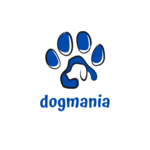How to Transition Your Dog to a Raw Food Diet Safely
In recent years, there has been a surge in pet owners considering raw food diets for their furry companions. Advocates of raw feeding claim numerous benefits, including improved digestion, healthier skin and coat, and increased energy levels for dogs. However, transitioning to a raw food diet requires careful planning and consideration to ensure your pet's safety and well-being.
Understanding the Basics of Raw Feeding
Before diving into the transition process, it's essential to understand what constitutes a raw food diet for dogs. A raw diet typically consists of raw meat, bones, organs, and occasionally fruits and vegetables. The idea behind this diet is to mimic what dogs would eat in the wild, which proponents argue is the most natural and nutritious option for them.
Consult with a Veterinarian
Before making any dietary changes for your dog, it's crucial to consult with your veterinarian. They can provide valuable insights into your dog's specific nutritional needs and any health concerns that may impact their diet. Your vet can also offer guidance on how to transition your dog safely and address any potential risks or challenges.
Gradual Transition
Transitioning your dog to a raw food diet should be done gradually to prevent digestive upset. Start by incorporating small amounts of raw food into their current diet and gradually increase the portion size over several days or weeks. This slow transition allows your dog's digestive system to adjust to the new diet gradually.
Balanced Diet
Ensuring a balanced diet is essential for your dog's health and well-being. A raw food diet should include a variety of proteins, such as beef, chicken, turkey, and fish, to provide essential nutrients and amino acids. Additionally, incorporating organs and bones into their diet ensures they receive vital vitamins and minerals.
Supplements
While a raw food diet can be nutritious, it may lack certain essential nutrients that dogs need to thrive. It's essential to supplement their diet with vitamins and minerals, such as calcium and omega-3 fatty acids, to ensure they receive all the necessary nutrients for optimal health. Your veterinarian can recommend appropriate supplements based on your dog's individual needs.
Hygiene and Food Safety
Raw meat can contain harmful bacteria such as Salmonella and E. coli, which can pose risks to both pets and humans. It's crucial to handle raw food safely by washing your hands thoroughly after handling, cleaning food bowls and utensils regularly, and storing raw meat properly to prevent contamination. Additionally, always supervise your dog while they are eating to prevent choking hazards.
Monitor Your Dog's Health
As you transition your dog to a raw food diet, closely monitor their health and behavior for any signs of digestive issues or nutritional deficiencies. Common signs of problems include diarrhea, vomiting, lethargy, and changes in appetite. If you notice any concerning symptoms, consult with your veterinarian immediately.
Be Flexible
Every dog is unique, and what works for one may not work for another. Be prepared to adjust your dog's diet based on their individual needs and preferences. Some dogs may thrive on a raw food diet, while others may require additional supplementation or a different approach altogether. Pay attention to your dog's response to the new diet and make adjustments as needed.
conclusion
Transitioning your dog to a raw food diet can offer numerous potential benefits, but it requires careful planning and consideration to ensure their safety and well-being. Consult with your veterinarian, gradually transition their diet, provide a balanced diet with appropriate supplements, practice good hygiene and food safety, monitor their health closely, and be flexible in your approach. With proper care and attention, you can safely transition your dog to a raw food diet and help them thrive.



leave me your thoughts here